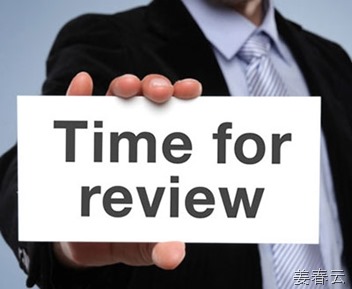| Okay, let's break down how to evaluate and encourage full participation and success in order to optimize the performance review process. This is about making the process useful, fair, and motivating for everyone involved. Evaluating the Performance Review Process (Current State)Before you can optimize, you need to understand what's working and what's not. Here are key areas to evaluate: - Clarity of Goals & Expectations:
- Question: Are performance goals clearly defined, measurable, achievable, relevant, and time-bound (SMART)? Do employees understand what's expected of them? Are they aligned with overall company objectives?
- How to Evaluate: Review goal documentation. Conduct surveys or interviews with employees and managers. Look for common themes regarding understanding of goals.
- Metrics: Percentage of employees who understand their goals; percentage of goals aligned with company objectives.
- Frequency and Quality of Feedback:
- Question: Is feedback given regularly (not just during the formal review)? Is it specific, actionable, and balanced (positive and constructive)? Is there a culture of continuous feedback?
- How to Evaluate: Analyze the frequency of documented feedback (performance logs, emails, meeting notes). Survey employees on the quality and timeliness of feedback. Observe team meetings to gauge the feedback culture.
- Metrics: Frequency of documented feedback; employee satisfaction with feedback quality; perception of a feedback culture.
- Fairness and Objectivity:
- Question: Is the review process perceived as fair and unbiased? Are performance evaluations based on observable behaviors and results, rather than personal opinions? Are there safeguards against biases (e.g., confirmation bias, halo effect)?
- How to Evaluate: Analyze review data for patterns of bias (e.g., are certain demographics consistently rated lower?). Conduct anonymous surveys focusing on fairness perceptions. Train managers on recognizing and mitigating bias. Implement inter-rater reliability checks (multiple reviewers).
- Metrics: Employee perceptions of fairness (survey results); evidence of bias in performance ratings; manager training completion rates.
- Documentation and Consistency:
- Question: Is the performance review process well-documented and consistently applied across the organization? Are there clear guidelines and templates for reviews?
- How to Evaluate: Review the documentation (performance review forms, guidelines, policies). Assess whether managers are following the documented process consistently.
- Metrics: Compliance rate with documentation requirements; consistency of ratings across departments/teams.
- Usefulness and Actionability:
- Question: Do performance reviews lead to meaningful development plans and improved performance? Are employees motivated and engaged by the process?
- How to Evaluate: Track the completion of development plans. Monitor employee performance improvements after reviews. Survey employees on the perceived usefulness of the reviews.
- Metrics: Completion rate of development plans; improvements in performance metrics; employee satisfaction with the usefulness of reviews.
- Technology and Tools:
- Question: Is the performance management system user-friendly and efficient? Does it support goal setting, feedback, and performance tracking?
- How to Evaluate: Gather feedback on the performance management system's usability and functionality. Analyze data on system usage.
- Metrics: User satisfaction with the system; system usage rates.

Encouraging Full ParticipationParticipation is key to making the process effective. - Communicate the Value: Clearly articulate why performance reviews are important (e.g., personal growth, career development, fair compensation, improved team performance). Emphasize the benefits for both the employee and the organization.
- Training and Support: Provide training for both managers and employees on how to conduct and participate in performance reviews effectively. Offer resources such as templates, examples, and coaching.
- Create a Safe and Supportive Environment: Foster a culture where employees feel comfortable being open and honest in their feedback, without fear of reprisal. Encourage constructive dialogue, not just top-down evaluation.
- Active Manager Involvement: Managers must actively participate, not just passively administer. They should provide regular feedback, coach their employees, and invest time in the review process. Their commitment sets the tone.
- Solicit Feedback on the Process Itself: Ask employees for their input on how to improve the performance review process. Show that you value their feedback and are willing to make changes based on their suggestions. This increases buy-in.
- Make it a Dialogue, Not a Monologue: Emphasize the two-way nature of the review process. Encourage employees to prepare for the review by reflecting on their accomplishments, challenges, and development goals. The review meeting should be a discussion, not a lecture.
- Lead by Example: Senior leaders should actively participate in the performance review process and demonstrate its importance.

Encouraging Success (Positive Outcomes)The goal is to translate the review into improved performance and a motivated workforce. - Focus on Development: Frame the review as an opportunity for growth and development, not just a judgment of past performance. Identify strengths to build upon and areas for improvement.
- Create Actionable Development Plans: Develop specific, measurable, achievable, relevant, and time-bound (SMART) development plans that are tailored to the individual's needs and goals.
- Provide Resources and Support: Provide employees with the resources and support they need to achieve their development goals (e.g., training, mentoring, coaching, access to online learning platforms).
- Recognize and Reward Performance: Link performance reviews to compensation, promotions, and other forms of recognition. This reinforces the importance of performance and motivates employees to strive for excellence.
- Follow Up and Monitor Progress: Regularly follow up with employees on their development plans and provide ongoing feedback and support. Monitor progress toward goals and make adjustments as needed.
- Celebrate Successes: Acknowledge and celebrate individual and team accomplishments. This reinforces positive behaviors and creates a positive work environment.
- Link Performance to Career Goals: Help employees see how their performance contributes to their long-term career goals. This increases their motivation and engagement.

Continuous Improvement- Regularly Review and Revise: The performance review process should be regularly reviewed and revised to ensure that it remains effective and relevant. Gather feedback from employees and managers on an ongoing basis.
- Stay Up-to-Date: Keep abreast of best practices in performance management and incorporate new approaches as appropriate.
- Use Data to Drive Decisions: Analyze performance review data to identify trends and areas for improvement. Use this data to inform decisions about training, development, and compensation.

Optimizing the performance review process is an ongoing effort that requires careful evaluation, active participation, and a focus on development and success. By following these steps, you can create a performance review process that is fair, motivating, and effective in driving organizational performance. It's not a "one-size-fits-all" solution; it requires tailoring to your specific organizational culture and needs. Good luck!
Tags: Automated Reminders Blogging Business Management Career Circumstances Focus Groups Honest Leadership Motivate Occurrence Performance Review Potential Productivity Supervisors


|
 1,191
1,191  0
0  0
0  3200
3200 


